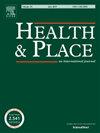‘More prioritisation on food security’ – exploring what initiative leaders envision for a food secure regional Australia
IF 4.1
2区 医学
Q1 PUBLIC, ENVIRONMENTAL & OCCUPATIONAL HEALTH
引用次数: 0
Abstract
Food security is a particular challenge in rural, regional and remote locations due to complexities associated with food availability, access, utilisation, stability, agency and sustainability dimensions. Existing approaches, such as emergency food relief, have been found to inadequately address these challenges, suggesting that a comprehensive portfolio of solutions could be more effective. Understanding what food security initiative leaders operating in these areas consider important will help establish a shared goal to guide the development of a portfolio approach. This paper aimed to determine government and community-led food security initiative leaders' visions of a food secure regional Australia. This qualitative study was conducted across inner regional, outer regional, remote and very remote townships in Western Australia. Participants' perspectives of a food secure region were sought through semi-structured interviews. A total of 101 participants provided evidence for 148 food security initiatives. Many initiative leaders' visions focused on improved access to food and education programs such as food growing and food literacy programs. Less emphasis was placed on solutions such as community-led food security action and advocacy for increased government support and funding. Participants typically described existing and siloed solutions that, despite their widespread implementation, have been critiqued for their inability to adequately address the complexities of food security. This suggests a disconnect between participants' visions and a more effective portfolio approach. More time should be invested in enhancing community and interest holder’ understanding of systems change and a portfolio approach to bridge this gap.
“更优先考虑粮食安全”-探索倡议领导人对澳大利亚地区粮食安全的设想
由于粮食供应、获取、利用、稳定性、机构和可持续性等方面的复杂性,粮食安全在农村、区域和偏远地区是一项特别挑战。人们发现,紧急粮食救济等现有办法不足以应对这些挑战,这表明综合解决办法可能更为有效。了解在这些领域开展工作的粮食安全倡议领导人认为什么是重要的,将有助于建立一个共同的目标,以指导组合方法的发展。本文旨在确定政府和社区领导的粮食安全倡议领导人的粮食安全区域澳大利亚的愿景。这项定性研究是在西澳大利亚州的内部区域,外部区域,偏远和非常偏远的乡镇进行的。通过半结构化访谈寻求参与者对粮食安全区域的看法。共有101名与会者为148项粮食安全倡议提供了证据。许多倡议领导人的愿景侧重于改善获得食品和教育项目的机会,如食品种植和食品扫盲项目。对社区主导的粮食安全行动和倡导增加政府支持和资金等解决方案的重视程度较低。与会者通常描述了现有和孤立的解决方案,尽管这些解决方案得到了广泛实施,但因无法充分解决粮食安全的复杂性而受到批评。这表明参与者的愿景与更有效的投资组合方法之间存在脱节。应该投入更多的时间来增强社区和利益持有人对系统变化的理解,并采用组合方法来弥合这一差距。
本文章由计算机程序翻译,如有差异,请以英文原文为准。
求助全文
约1分钟内获得全文
求助全文
来源期刊

Health & Place
PUBLIC, ENVIRONMENTAL & OCCUPATIONAL HEALTH-
CiteScore
7.70
自引率
6.20%
发文量
176
审稿时长
29 days
期刊介绍:
he journal is an interdisciplinary journal dedicated to the study of all aspects of health and health care in which place or location matters.
 求助内容:
求助内容: 应助结果提醒方式:
应助结果提醒方式:


